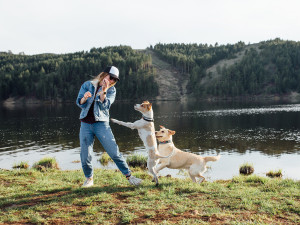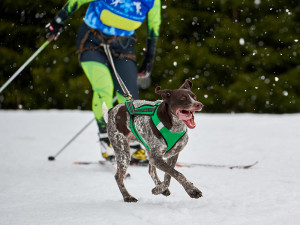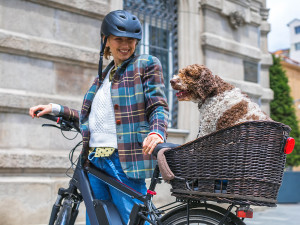How to Try Dryland Mushing with Your Dog
Keep you and your dog in shape — no snow required.
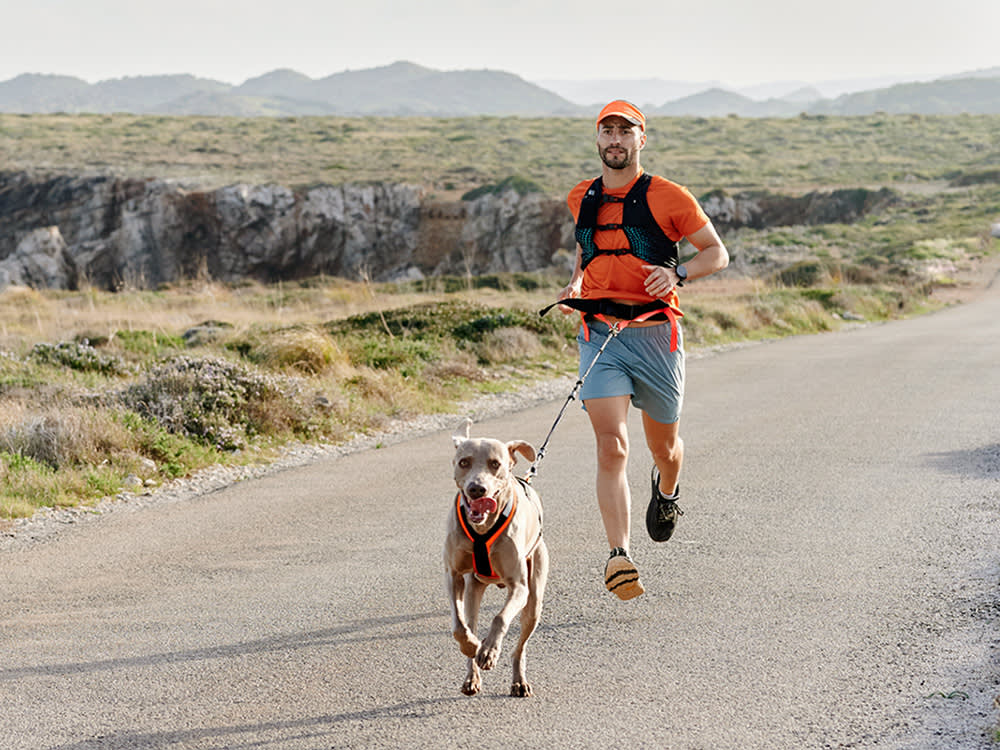
Share Article
When it comes to dog mushing, you probably think of a team of sturdy, excited dogs pulling sleds hundreds of miles along snowy, Alaskan trails. But, turns out, you don't need a team of Huskies — or even snow — to try mushing. Enter: dryland (or urban) mushing, a sport that's gaining in popularity in which your dog pulls you on dry land, instead of ice or snow. It's a great way to keep you and your pup in shape — and it's easier to try than you might think. Here's how.
What is Dryland Mushing?
Also known as urban mushing, dryland mushing refers to non-snow, dog-powered activities that involve one to two dogs, a human, and minimal equipment. The most popular type of dryland mushing is canicross (canine + cross country), where you attach your dog to your waist with a bungee leash and let them pull you forward as you run. Canicross is a great way to bond with your dogopens in a new tab while increasing your speed, stride and endurance.
Some other popular forms of dryland mushing are bikejoring (your dog pulls you on your bikeopens in a new tab), skatejoring (your dog pulls you on your skateboardopens in a new tab or rollerblades), and carting (your dog pulls a loaded cart for a specific distance).
How to Try Dryland Mushing
The best way to get started is with canicross. Any breed can take part in canicross — all you need is a dog who’s healthy and loves to run. (Puppies, dogs with prior injuries, or older dogs with arthritis should not take part in dryland mushing.) Here's how to try canicross:
Get your dog in shape
If your dog hasn’t been particularly active, get them in shape first. Begin by walking and progress to running as their endurance improves. As with any new activity, check with your veterinarian before starting.
Set yourself (and your pup) up properly
For canicross, you’ll need: a properly fitted and padded pulling harness; a padded belt for you; and a gangline, which connects you to your dog. Harnesses can be found online (search for “canicross equipment”). Just be sure to read measuring guidelines closely to ensure a proper fit. Dogs rarely stand still for long, so measure your dog several times to get a reliable average.
The harness must distribute the pulling weight along your dog’s shoulders while avoiding their shoulder joints, belly, and spine. Many people prefer a shorter, “buggy style” harness for dryland because it gives a better pull angle, but you can also use a traditional X-back sled harness. Freight- or weight-pulling harnesses do not work well, since they’re designed for a load that’s much closer to the ground than the average person’s waist. You can expect to pay between $25 and $50 for a good harness. For the human portion of the canicross setup, a commercial skijor system with a belt and gangline will run between $40 and $70, and is often sold as a kit.
You can also design your own canicross system. Make sure it’s comfortable, keeps you safely connected to your dog, and has some sort of shock absorber (such as an interwoven bungee) between you and your dog to prevent injuries. The line should be long enough to keep the angle as low to the ground as possible, yet not be an obstacle to other trail users. Most skijor lines have about eight to 10 feet of quality polypropylene rope between the waist belt and the dog’s harness. This allows the harness to properly distribute the load and the dog to have more forward power.
Train your dog
Initially, some dogs are more willing to pull than others. The most important thing to remember when getting started is to give your dog a fun and positive experience so they end their training sessions craving more.
If you’ve worked hard to train your dog not to pull, don't worry: You can maintain your dog’s leash-friendly behavior by conditioning them to know that wearing a harness means it’s OK to pull. Be consistent: If your dog is wearing the harness, they need to be pulling something. Start off with something small — a little log, a milk jug filled with water, a small wheelbarrow tire. Go on your normal walk, but put the harness on your dog and have them drag the object. Once they're used to having weight and movement behind them, you can gradually increase the load to about 25 percent of their body weight.
As your dog becomes comfortable with pulling weight, start positioning yourself behind them while they're pulling to get them used to the idea that you will be behind rather than next to them.
Incorporate commands
Next, you can introduce some commandsopens in a new tab. Traditionally, “gee” means turn right, “haw” means turn left, “whoa” means stop, and a cheerful “hike” means “Let’s go.” However, you can use any set of terms you want as long as you use them consistently and they are distinct enough to not be confusing for your dog.
Always say the turn commands as you are making the turn. If your dog starts down the wrong direction, stop, give a verbal correction (I use “Ah!”) and repeat the turn command. The moment your dog looks down the correct trail, give a happy “Good dog!” and start moving. Be patient and make sure you don’t give an incorrect direction. Your dog will naturally learn that the correct direction means the walk continues.
Another important command is “on by,” which means “Continue straight through that intersection or past that distraction” (think: squirrelsopens in a new tab, other dogs, kids). While your dog is working, you want them to continue down the trail and not stop to visit along the way. Be sure to give your dog lots of praise at the end of each session.
Once you and your dog are working as a team, start increasing your speed and distance. Try new trails. Add some challenge by going to an area with lots of turn choices — when it comes to a good team-building experience, mental workouts are just as important as physical ones.
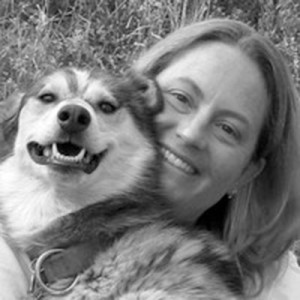
TC Wait
TC Wait is a writer and geologist who explores the backcountry of Colorado and Alaska with her team of 20 rescued sled dogs. She volunteers for sled-dog organizations and animal-rescue groups.
Related articles
- opens in a new tab
How to Train a Dog Not to Jump
Kinship Collective dog trainer Robert Haussmann’s pro tips for getting a hyped-up dog to chill out.
![Woman holding a beagle in warm dappled summer light]() opens in a new tab
opens in a new tabYou’ve Got a Summer-Lovin’ Pup. Here’s How to Keep Them Safe
Some like it hot (but not most dogs). Here are the season’s health hazards, from fleas to foxtails.
![Skijoring brown dog in snow sport racing with owner]() opens in a new tab
opens in a new tabHow to Ski With Your Dog
Dogs don’t have to be pro athletes to enjoy some quality time in the snow.
![A young woman standing next to her bike with the dog in the basket]() opens in a new tab
opens in a new tabHow to Take Your Dog on a Bike Ride
How to take your dog for a spin — safely.
